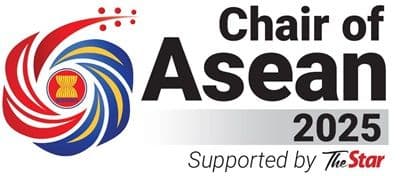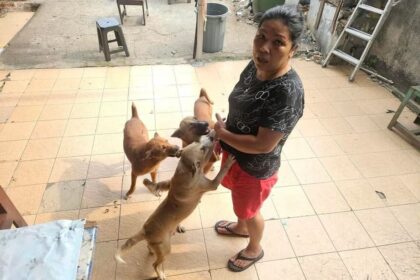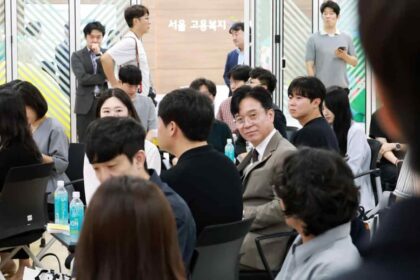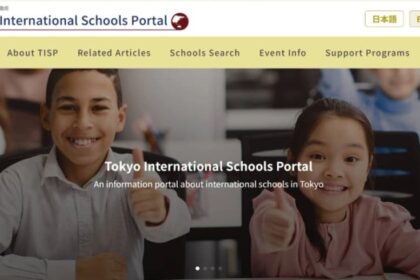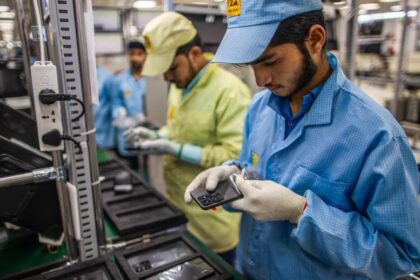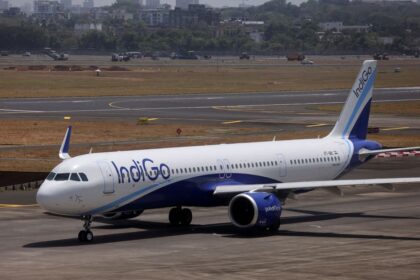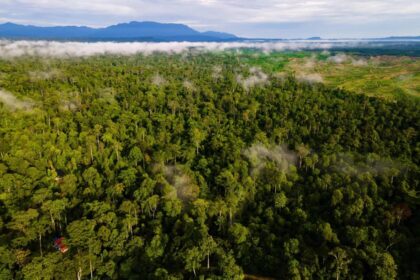A symbolic handover and a trade upgrade define the summit finale
In Kuala Lumpur, the Association of Southeast Asian Nations closed its 47th Summit with a pair of moments that underscored both tradition and ambition. Malaysia formally handed the ASEAN chairmanship to the Philippines for 2026, a symbolic transfer marked by the passing of a gavel. Minutes earlier, ASEAN and China signed the ASEAN China Free Trade Area 3.0 upgrade, a sweeping update aimed at making cross border commerce faster, greener, and more digital. Together, the events signaled a region intent on consensus and tangible outcomes at a time of strained geopolitics and shifting supply chains.
- A symbolic handover and a trade upgrade define the summit finale
- What changes when the gavel moves to Manila
- ACFTA 3.0, explained in plain terms
- Partner summits highlight regional ties
- Security priorities, from the South China Sea to crisis diplomacy
- Malaysia’s chair year leaves a big footprint
- Who was in the room and why it matters
- What to watch as 2026 approaches
- Key Points
The final day followed a packed schedule. Leaders witnessed the ACFTA 3.0 signing, then convened the 28th ASEAN China Summit, a commemorative summit with New Zealand Prime Minister Christopher Luxon, and the 5th ASEAN Australia Summit with Prime Minister Anthony Albanese. Malaysian Prime Minister Anwar Ibrahim presided over the closing ceremony and the handover to Philippine President Ferdinand Marcos Jr, concluding with a chair’s press conference at the Kuala Lumpur Convention Centre. Chinese Premier Li Qiang attended the summit, underscoring the weight of the region’s largest trading relationship.
As chair, Anwar urged the region to stay grounded in cooperation and reason, noting that ASEAN advances through steady engagement rather than grand gestures.
“No chairmanship can solve every problem, but perseverance and cooperation are essential.”
The summit unfolded in a city that became a diplomatic capital for the week, drawing leaders and delegations from across Asia and beyond. The gathering was described by organizers as the largest ASEAN summit since the bloc’s founding in 1976. It also marked United States President Donald Trump’s first visit to Malaysia as president, adding to the global spotlight on Kuala Lumpur.
What changes when the gavel moves to Manila
The ASEAN chair shapes the agenda, hosts the year’s key meetings, manages consensus across the 10 member states, and speaks for the bloc in dialogues with major partners. The role is rotational and typically follows alphabetical order. Malaysia stewarded 2025 under the theme Inclusivity and Sustainability. The Philippines will lead in 2026, taking responsibility for shepherding decisions and crafting deliverables that can gain consensus across diverse economies and political systems.
President Ferdinand Marcos Jr announced a theme for 2026 that reflects that balancing act: Navigating Our Future Together. He outlined priorities that include strengthening peace and security anchors, promoting prosperity corridors that link markets and infrastructure across borders, and advancing people’s empowerment through education, health, and digital access.
After receiving the chairmanship gavel, Marcos framed the task as one that requires clear goals and practical steps.
“ASEAN makes the greatest strides when vision is matched with pragmatism. The Philippines is honored to take on the responsibility of leading ASEAN in 2026.”
Manila’s chair year will coincide with the 50th anniversary of the Treaty of Amity and Cooperation, the bloc’s core pact for peaceful relations. The TAC enshrines non interference, mutual respect, and peaceful settlement of disputes. It has steadily expanded its circle of external signatories, with 58 parties now committed to its principles. Finland was the most recent to sign, reflecting the treaty’s role as a common diplomatic baseline for partners that engage ASEAN.
ACFTA 3.0, explained in plain terms
ACFTA is the umbrella for trade and investment rules between ASEAN and China. The original agreements lowered tariffs across thousands of products, making it easier for companies in Southeast Asia and China to sell into each other’s markets. An initial upgrade a decade ago streamlined some procedures. The new ACFTA 3.0 aims to bring the pact into today’s economy, where services, data, and green technology drive growth alongside goods.
What changes in practice? The upgrade is expected to modernize customs and border procedures so goods clear faster. It points to stronger cooperation on digital trade, including e commerce and data related standards, so small and medium firms can reach customers across the region with fewer administrative hurdles. It elevates cooperation on sustainable development, such as standards for energy efficiency and clean technology, and promotes supply chain resilience so factories can adjust to disruptions while keeping trade flowing. Consumer protection, competition policy, and support for smaller firms are part of the package.
For households and businesses, that can translate into more predictable prices, faster delivery times, and a wider choice of products and services. For governments, it is about making rules interoperable so that paperwork, data requirements, and green standards line up across borders. The upgrade also gives ministers and working groups a clear work program for the next few years.
Prime Minister Anwar Ibrahim described the signing as a marker of where ASEAN and China see their partnership heading in the near term.
“The signing of the ASEAN China Free Trade Area 3.0 will mark a new chapter in the partnership, demonstrating shared commitment to fair trade, digital transformation, and sustainable energy.”
Partner summits highlight regional ties
The day’s leader level meetings extended beyond China. The commemorative summit with New Zealand and the 5th ASEAN Australia Summit focused on economic cooperation, climate and energy, supply chains, and people to people links. Both partners are part of the Regional Comprehensive Economic Partnership, and both are active participants in the East Asia Summit, which convened in Kuala Lumpur with major powers in attendance.
Across these sessions, leaders discussed digital economy frameworks, clean energy transitions, and resilient supply chains. That included cooperation on green hydrogen, critical minerals, and electricity interconnections, as well as simplified customs procedures that make regional production networks more efficient. Ministers and officials also reviewed work plans under ASEAN Plus Three (China, Japan, Korea) and RCEP, aligning them with national strategies for inclusive growth.
The East Asia Summit returned to the venue where the forum first met in 2005, marking two decades of dialogue among ASEAN and partners including the United States, China, Russia, Australia, Japan, India, and New Zealand. Leaders emphasized ASEAN centrality, meaning the region sets the agenda and convenes partners to address security and economic issues through cooperation rather than confrontation.
Summing up Malaysia’s approach as chair, the Prime Minister’s Senior Press Secretary Tunku Nashrul Abaidah said the goal was to show ASEAN’s relevance through action on practical issues.
“Under the theme Inclusivity and Sustainability, ASEAN remains a key player in shaping a stable, prosperous, and equitable Indo Pacific region.”
Security priorities, from the South China Sea to crisis diplomacy
The Philippines has signaled it will push for steady progress on the long discussed Code of Conduct in the South China Sea. The COC process is a series of negotiations between ASEAN and China, with the aim of setting clearer rules to reduce risks at sea. Progress tends to be slow, since the text must satisfy every ASEAN member and China, but even small steps can lower the chance of incidents by clarifying how ships and aircraft operate near each other.
The TAC will feature prominently in 2026 because of its 50th anniversary. The treaty is ASEAN’s answer to the region’s complex security environment. It does not resolve disputes, but it creates a floor of behavior: non interference in internal affairs, mutual respect for sovereignty, and peaceful settlement of disputes. New signatories commit to those norms as a condition of deeper ties with ASEAN. That shared baseline becomes a useful tool when tempers flare or when external powers seek a framework for engagement with Southeast Asian states.
ASEAN will also continue to rely on its consensus style when dealing with humanitarian crises and political instability. The chair works with other members, the ASEAN Secretariat, and external partners, including the United Nations, to coordinate responses and keep lines of communication open.
Malaysia’s chair year leaves a big footprint
Malaysia’s stewardship in 2025 was framed by Inclusivity and Sustainability and by a commitment to keep ASEAN’s doors open to partners. Organizers described the summit as the bloc’s largest gathering since 1976. Kuala Lumpur hosted dozens of leader level meetings and a full calendar of bilateral sessions, making the city a hub for shuttle diplomacy throughout the week.
The chair also kept economic issues at the fore. ASEAN Plus Three and RCEP sessions emphasized digital economy cooperation, clean energy transitions, and efforts to make supply chains more resilient. These areas feed directly into ACFTA 3.0 implementation, where customs modernization, digital trade standards, and sustainability cooperation will require detailed follow up by ministries and regulators.
On international issues, Malaysia called for attention to humanitarian needs and welcomed ongoing efforts at the United Nations to support peace initiatives related to Palestine. The East Asia Summit brought together major powers for discussions on regional stability, underscoring ASEAN’s role as host and convener.
Malaysia’s year as chair closed in Kuala Lumpur with the official handover, a reminder that the ASEAN chairmanship is both a ceremonial duty and a practical burden of coordination. With the gavel now in Manila’s hands for 2026, policymakers and working groups shift immediately to the next set of deadlines and deliverables.
Who was in the room and why it matters
Among the leaders who shaped the final day were Chinese Premier Li Qiang, New Zealand Prime Minister Christopher Luxon, Australian Prime Minister Anthony Albanese, and United States President Donald Trump, who made his first visit to Malaysia as president. Their presence highlighted a simple reality. ASEAN sits at the crossroads of vital trade routes, investment flows, and strategic sea lanes, so engagement in Kuala Lumpur has practical consequences for industries and communities across the Indo Pacific.
ASEAN’s dialogues give major economies a place to align programs with regional priorities. That can mean resources for infrastructure, education, energy transition, and public health. It can also mean hard conversations about maritime safety and export controls. The work is often incremental, yet these steps, repeated year after year, create guardrails that help prevent miscalculation and keep commerce moving.
Vietnam’s delegation, led by Prime Minister Pham Minh Chinh, joined almost 20 multilateral sessions and more than 20 bilateral meetings during the summit. That level of engagement reflected how member states use ASEAN platforms to push national proposals while keeping the focus on building a united, resilient, inclusive, and sustainable ASEAN Community.
What to watch as 2026 approaches
Manila’s next steps will involve translating broad aims into specific deliverables that can pass ASEAN’s consensus test. Expect detailed work on ACFTA 3.0 implementation. Customs modernization will require pilots and capacity building. Digital trade provisions will call for guidelines on data flows, consumer protection, and small business support. Sustainability chapters will need roadmaps for energy efficiency, green finance, and clean technology cooperation.
On security, the Philippines is likely to prioritize practical risk reduction in the South China Sea through steady engagement on the Code of Conduct. That can include agreements on incident prevention, communication hotlines, and rules for ship and aircraft encounters. The TAC’s anniversary gives ASEAN an opportunity to showcase a positive message about diplomatic habits that reduce tension and keep channels open even when disputes persist.
Another storyline is ASEAN’s growth to 11 members, with Timor Leste on a phased path toward full membership. The chair will coordinate support to build institutions and align regulations so that the newest member can take on ASEAN processes without being overwhelmed.
Economic watchers will track whether ACFTA 3.0 nudges investment into sectors such as logistics, renewable energy, and digital services. Private sector input will be essential, since companies are the ones that will use new rules at ports, online, and in factories. If the rules are clear and predictable, the upgrade can start to show up in shorter delivery times and more cross border projects.
Key Points
- Malaysia handed the ASEAN chairmanship to the Philippines during the closing ceremony of the 47th ASEAN Summit in Kuala Lumpur.
- ASEAN and China signed the ASEAN China Free Trade Area 3.0 upgrade, targeting faster customs, stronger digital trade, and sustainability cooperation.
- Philippine President Ferdinand Marcos Jr unveiled the 2026 theme Navigating Our Future Together and pledged to strengthen peace, prosperity corridors, and people’s empowerment.
- Malaysia’s 2025 theme was Inclusivity and Sustainability, with a focus on digital economy, clean energy, and resilient supply chains.
- The final day included the 28th ASEAN China Summit, a commemorative summit with New Zealand, and the 5th ASEAN Australia Summit.
- Chinese Premier Li Qiang attended, and United States President Donald Trump made his first visit to Malaysia as president.
- The Treaty of Amity and Cooperation turns 50 in 2026, with 58 signatories and Finland the most recent.
- Progress on a South China Sea Code of Conduct remains a priority for the Philippines as chair.
- Timor Leste continues on a phased path toward becoming ASEAN’s 11th member.
- Ministers will begin detailed ACFTA 3.0 implementation work on customs, digital trade, and sustainability in the coming year.


